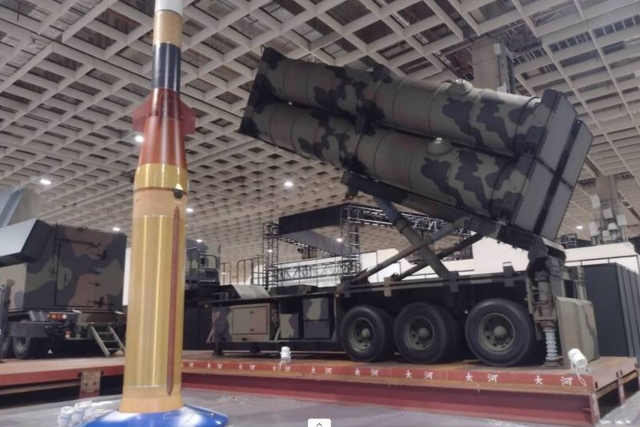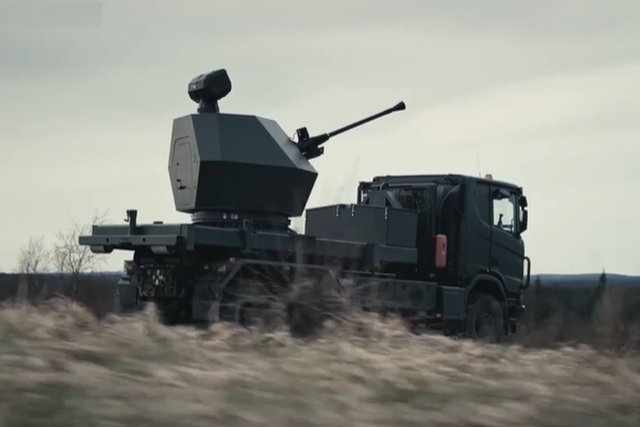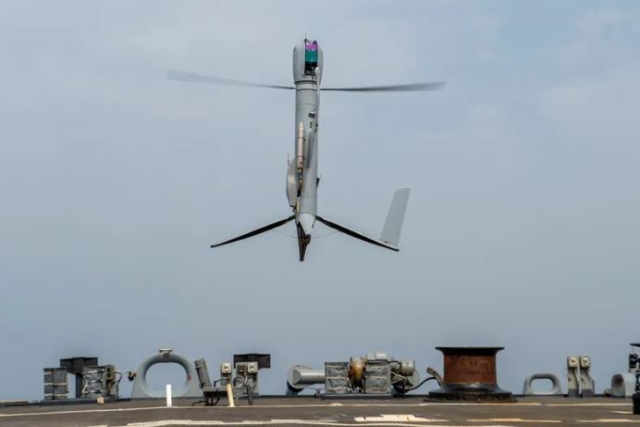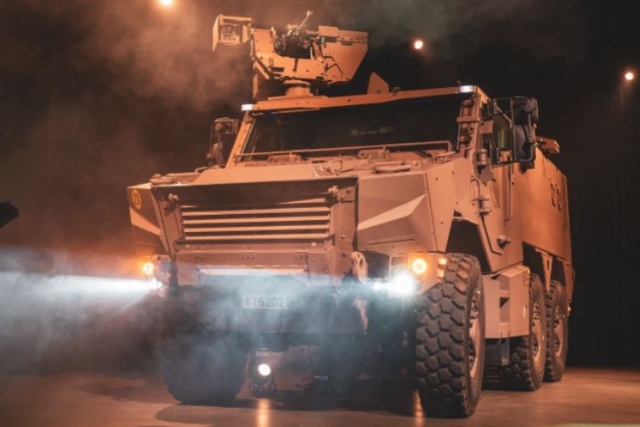BEL Expects Growth Of 8-10% In FY2015

S K Sharma - Chairman & Managing Director of Bharat Electronics Limited (BEL)
In an interview with Defenseworld.net, S K Sharma - Chairman & Managing Director of Bharat Electronics Limited (BEL) talks about his company's performance highlights in 2013-2014, the latest jont venture with Thales and BEL's participation in Aero India 2015.
DW : What are the performance highlights of BEL in 2013-14? And what’s the growth the company is tracking in the current financial year?
S K Sharma: The company achieved a turnover of Rs.6,174 crores in 2013-14 and the PAT grew by 15.2% in comparison to the previous year. An all-time high growth of 28% was achieved in exports by registering export turnover of US$ 42 million. For the first time, the company exported state-of-the-art Sonar system and also successfully commenced manufacturing of aircraft cable looms for Pilatus, Switzerland. The major orders executed during 2013-14 for our defence and civilian customers include Akash Missile Systems (Army and Air Force), Passive Night Vision Devices (PNVDs), Low Level Light Weight Radars, Missile Warning System (MWS), Hull Mounted Sonars, Shipborne EW systems, Central Acquisition Radars, Coastal Surveillance System and Electronic Voting Machine. In the current FY BEL expects top-line growth of 8 to 10% with several new orders in the pipeline.
DW : What’s the cost of the upgrade project of the Schilka air defence system, the first of which was handed over to the Indian Army in November 2014? What’s the size and scope of this upgrade program?
S K Sharma: BEL handed over the first Upgraded Schilka Weapon System to the Indian Army in November 2014. Schilka Upgrade is an all-weather, self-propelled, tracked, low-level Air Defence Weapon System. This program involves upgradation from analog Radar system to state-of-the-art Search-cum-Track Digital Radar with electro optical fire control system. Also, Main Engine, Auxiliary Engine, Integrated Fire Detection and Suppression System, NBC (Nuclear, Biological & Chemical) filter and Communication system have been upgraded. New air conditioner has been provided for the comfort of the crew. The upgraded system provides drastic improvements in operational performance, accuracies, power consumption and Mean Time Between Failures (MTBF). The addition of an electro-optical system operating in parallel with the radar enables accurate identification, acquisition and tracking of targets while operating in an ECM environment. The system is capable of firing aerial targets while on the move. The system can accept cueing from external Surveillance Radar. The system can engage enemy aircraft during day or night and in all weather conditions. 48 numbers of Schilka Weapon systems are to be upgraded by BEL as per the contract.
DW : Could you share some details on your agreement with Elbit Systems Electro-optics-Elop Ltd, Israel, for the joint production of Compact Multi-Purpose Advance Stabilisation System (CoMPASS) for Naval helicopter applications, and the progress made so far?
S K Sharma: BEL entered into a Technology Collaboration Agreement (TCA) with Elbit Systems Electro-optics-Elop Ltd (ELOP) in 2010 for manufacture of CoMPASS for the Advanced Light Helicopter (ALH) program. As per the TCA, BEL has acquired the License, Know-How, Technical Information, Training, Technical Assistance to manufacture BEL’s work share, perform final assembly / testing of the CoMPASS using ELOP’s work share and to sell the CoMPASS to ELOP in case of ALH program and to sell the CoMPASS to end user only for future programs, subject to Israeli Government approval. The technology transfer also enables BEL to provide D-level maintenance to customers. CoMPASS for ALH platform is currently under production.
DW : What’s BEL’s part in the India-Israel Barak-8 project? How has it helped in indigenization of complicated systems?
S K Sharma: The Barak-8 project was taken up by DRDO and Israel Aerospace Industry (IAI) to jointly develop the shipborne Air Defense Missile System called LRSAM. The adaptation of this program for the Indian Air Force (IAF) is called MRSAM. The initial developmental order for the supply of LRSAM program for 3 ships and MRSAM program has been placed on IAI by the Government of India. The LRSAM has been installed in the first ship and trials also successfully completed. There is no role for BEL in the initial supply of developmental orders from the Navy and Air Force for the LRSAM and MRSAM programs, respectively. However, in future supplies of LRSAM, BEL has been identified as Lead Integrator and production agency for Radars.
DW : Could you talk about BEL’s latest joint venture with Thales?
S K Sharma: Subsequent to the approval from the Foreign Investment Promotion Board (FIPB) and the Ministry of Defence (MoD), a Joint Venture Company (JVC) between BEL and Thales, France, was incorporated in Bangalore on August 28, 2014, and named as ‘BEL-Thales Systems Limited’. BEL and Thales have share ratio of 74% and 26% respectively. The JVC has obtained all statutory approvals and licenses for commencement of business and is operational. Currently, the JVC is focusing on Air Traffic Management Radars for both civilian and defence markets. The JVC is also exploring the possibility of developing Passive and Multi Static Passive Surveillance Radar as futuristic Air Traffic Surveillance and Management, Multi Target Tracking Radars for Naval Fire Control application and Geo Radars for ground penetrating, slope detection and early warning high wall failures in open cast coal mine applications.
DW : What’s your take on Aero India 2015, and what are the things that BEL is going to showcase here?
S K Sharma: Aero India 2015 is one of the major international exhibitions and a platform for showcasing capabilities in products / services for the Defence Aerospace industry. Aero India 2015 is a unique opportunity to promote products and expertise, expand the international network and demonstrate the capacity for innovation. Specialists, policy makers and buyers from all over the world come to update themselves on the latest in the industry. BEL will showcase its key products and systems in the following major areas of its business:Electronic Warfare & Avionics, Radars, Electro Optics, Fire Control Systems, Shelters, Sonars, C4I Systems, Simulators, Communication equipment like Software Defined Radios, HF Radios & Radio Relays, and Encryptors including Terminal End Secrecy Device (TESD), IP Encryptor and Link Encryptor for Versatile Environment (LIVE).
DW : What sort of opportunities do the Indian government’s decisions such as the 49% FDI, delicensing of military MRO and ‘Make in India’ provide the company?
S K Sharma: It is expected that increase in FDI would bring in core and critical technologies in defence, which will require large investment and resources in manufacturing and R&D capability. To absorb and further develop these technologies, we must have a commensurate ecosystem, manufacturing infrastructure, R&D and manpower to take advantage of larger FDI. This will also require conducive government policies and environment for defence export, protection if IP and other business interests of Indian and foreign firms. With the present government’s firm resolve to push for ‘Make in India’ programs, global OEMs would be looking for co-development, co-production arrangements with Indian industry, leveraging the skilled manpower and infrastructure available locally to address the Defence market. This will help the organisations like BEL and others who have excellent manufacturing infrastructure, R&D capability and skilled manpower.










